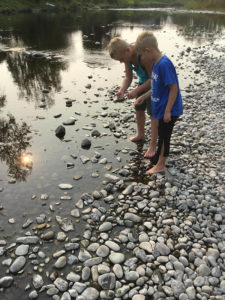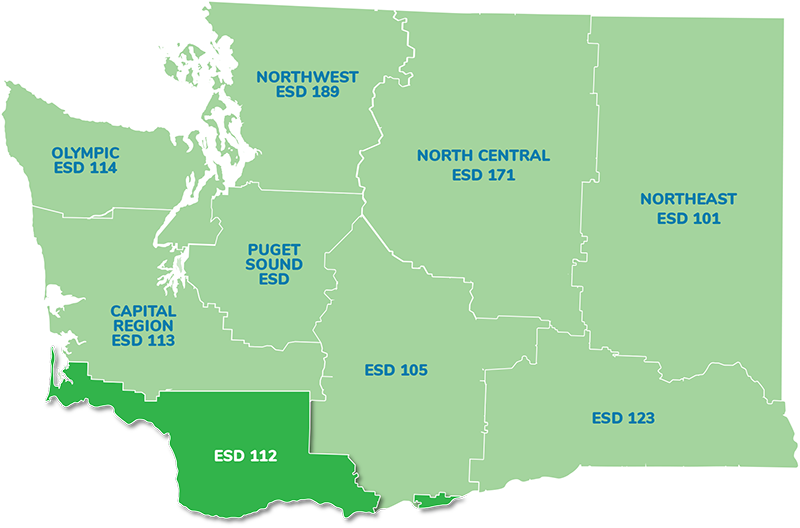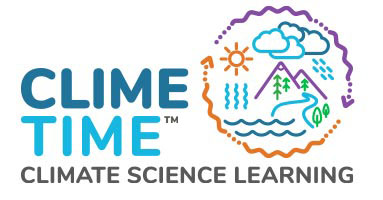STEM Storylines
Growing student engagement with local connections

Overview
The STEM Storylines are core K-5 instructional units developed over the past four years that support learning focused on bundles of NGSS and the Science and Engineering Practices. Each Storyline deeply integrates STEM learning with other subject areas such as ELA and math. The Storylines engage students in sustained problem-based learning and phenomena-based inquiry connected to global, regional, or local issues that culminate in a public-facing product addressing the focal problem.
What We Did

The STEM Storylines support elementary science teachers to shift from standalone science activities to coherent, rigorous, and engaging three-dimensional learning experiences. Although they were initially developed to leverage FOSS kit materials, they can be implemented flexibly across contexts. Each Storyline is organized around a driving question and anchoring phenomenon connected with key conceptual standards and SEP learning goals from the NGSS. Student interest, voice, and agency are prioritized throughout the learning activities. The inquiry process involves connections to STEM-related career pathways through specific professionals, especially those with marginalized identities. In addition, students are supported in making community connections related to the driving question, including learning from family and community members. STEM Storylines are co-designed with teachers and leverage teacher expertise to refine, review, and revise materials (see STEM Storyline Development Process).
There are currently 14 completed STEM Storylines, which are all available as OER resources:
- Kindergarten: Animal Sanctuary, Weather & Climate
- 1st grade: Patterns in the Sky, Inspired by Nature
- 2nd grade: Where Did the Beach Go?, Why Won’t Our Blueberries Grow?
- 3rd grade: Ecosystem Invasion, Beyond Weather & Climate, Forces and Interactions
- 4th grade: Sediment on the Move, Save the Pika!, Waves and Energy
- 5th grade: What’s For Lunch?, Save Our Turtles!
Several of these Storylines include grade-level appropriate climate connections. For example, the second-grade Storyline “Where Did the Beach Go?” explores sea level rise and erosion through analysis of data and the phenomenon of beach erosion. The first-grade Storyline “Patterns in the Sky” investigates the phenomenon of increasingly frequent and devastating wildfires. Data generated by Heidi Roop and the Climate Impacts Group and leveraged in Washington Green Schools’ STEM Seminars are used as artifacts to engage elementary students in inquiry about climate science related topics.
What We Learned
Teachers have responded very positively to the STEM Storylines and problem-based learning model and reported that students are more excited and motivated by science learning and are engaging in more in-depth science discussions. The guiding questions help sustain students’ interest over time and provide coherence across learning activities. Teachers have especially appreciated the clearly stated NGSS connections and opportunities for disciplinary integration.
“The revision of the science kits to include STEM Storylines has linked students to real-world science and empowered them to create and design products to educate others and solve problems,” says 4th grade La Center teacher Bonnie Lock. “Now the kits are much more than activities. They are tools to help develop the foundation for engaged student citizens and leaders.”
Substantial changes have been made to the Storyline structure based on feedback from teachers at regional working groups and trainings. To support the usability of the Storylines, the units have been adapted to accommodate teachers in districts where STEM learning is deprioritized. Science learning activities that are 20 to 45 minutes long, with optional extension activities, can be more flexibly and regularly integrated into limited instructional time. Over the last four years, the Storylines have also shifted from weaving together existing OER to creating and housing independent resources that are more stable than external resources. In addition, Storylines now incorporate a variety of supplemental resources to support ease of implementation, such as thinking templates and Google Slides. Here is an example of a fifth-grade Storyline, “What’s for Lunch,” with slides to accompany facilitation and thinking templates/handouts, all housed in a Google Drive folder.
The STEM Storylines project also involves targeted professional development support based on the interests and needs of teachers in the region, including self-guided webinar trainings. In particular, trainings support teachers’ development of skills and confidence related to three-dimensional NGSS-aligned science teaching as well as providing specific guidance on how to implement each Storyline. These trainings help teachers understand access to high-quality, rigorous science learning as a crucial equity and justice issue.

Project Reach
Teachers
Students
Project Partners

Feedback
All five first grade teachers on my team taught the Patterns in the Sky storyline this year, and we loved it! It was great to finally have a cohesive, NGSS aligned unit so that we weren’t all scrambling to create our own. Most of all, our students could not wait for science! They loved the stories, games and engineering challenge. It was their favorite science unit of the year.
Contact
For more information contact:
Pranjali Upadhyay, Integrated Curriculum Specialist, Educational Service District 112
pranjali.upadhyay@esd112.org
